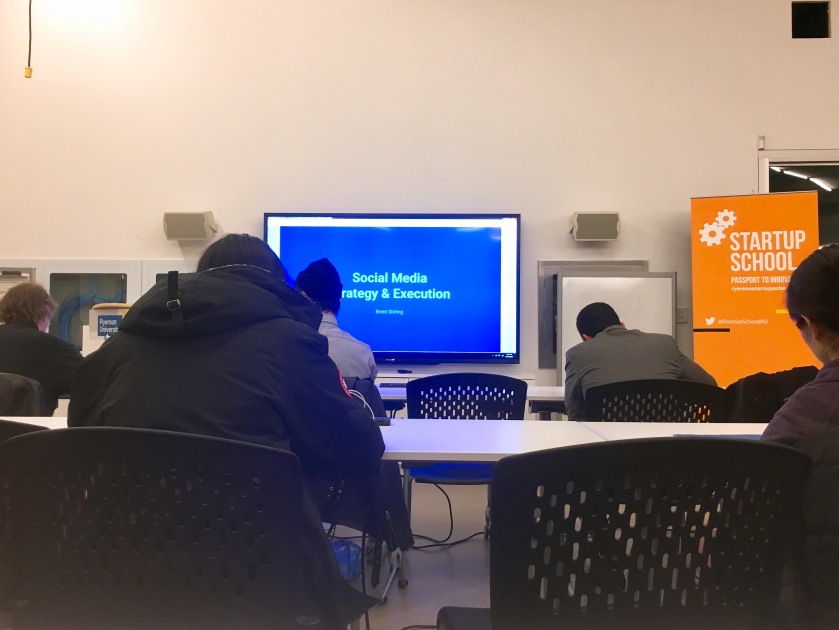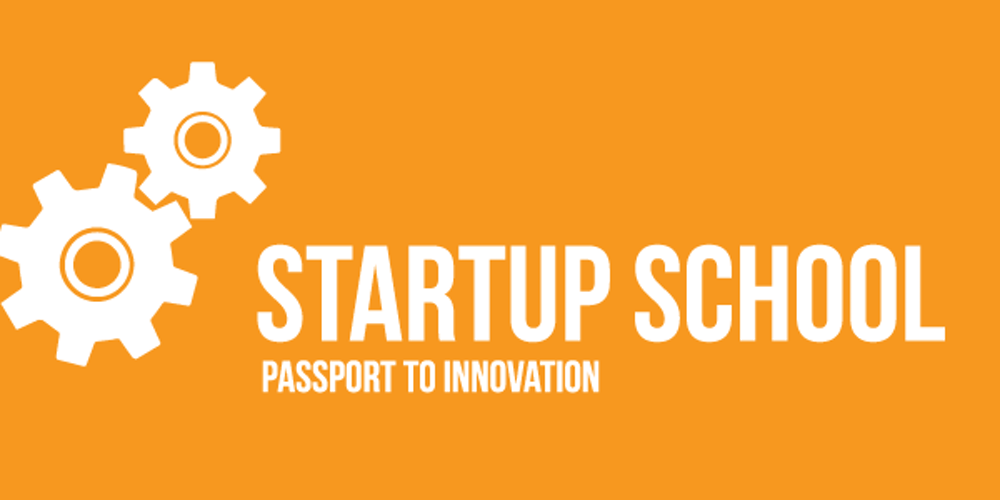Earlier this week, I attended a social media workshop organised by Ryerson Startup School in downtown Toronto. It was my first time at Ryerson University, and the workshop took place on the second floor of the Student Learning Centre. Our speaker was Brent Stirling, a social media strategist at Shopify who, by his own account, has worked in social for just about everyone.
His presentation was two hours long and covered social media strategy and execution, social media platforms, how best to use them and what not to do, a website audit checklist, Facebook ads, social media tools, and the importance of measuring your social media efforts. It was thorough, and what I appreciated the most was that it was up-to-date in terms of best practices for social media. Social media moves so fast that it’s a challenge and oftentimes a frustration to keep on top of it all, even for those of who use it daily for work or to grow our business.

Here are the top 5 things I learned at this workshop:
- Use pixels on your website for retargeting. I’m sure a lot of people out there know about this one already, but it was news to me. According to retargeter.com, retargeting “is a cookie-based technology that uses simple Javascript code to anonymously ‘follow’ your audience all over the Web.” You place code on your website that drops a cookie every time there is a new visitor to your site. Many of these visitors will leave your site without learning anything about you, so these cookies follow them as they surf the web, which then allows you to retarget them by showing them ads about your product or service. Ads are only shown to visitors who have already visited your website. In other words, even if they bounced off your website, you now have another way to try to recapture them and bring them back.
- Don’t use hashtags on Facebook. Not too long along, I owned my own business and was responsible for all the marketing, including digital and social media. Back then, brands were using hashtags on Instagram, Twitter, and Facebook. While hashtags are critical to success on the first two platforms, now they are rarely used on Facebook. Brent said they are okay to use to support an event, but not otherwise.
- Create a YouTube account for your business, even if you never create any video. This has to do with the way the Google algorithm works, and the fact that YouTube is a Google subsidiary. If you are not familiar with the Google algorithm, the important thing to know is the way websites are ranked in your search engine results is not random. Google pulls a whole bunch of data and indexes things like your social media platforms to measure the importance of your website. Having a Youtube account is good for your website’s or web page’s search engine rank (search engine optimisation).
- Use Twitter Cards. With Twitter Cards, you can attach rich photos, videos and media experiences to Tweets, helping to direct traffic to your website. According to Twitter, all you have to do is add a few lines of markup to your webpage, and users who Tweet links to your content will have a “Card” added to the Tweet that’s visible to their followers. There are 4 types of cards and each serves a different function. For example, the App Card drives downloads of mobile apps. Very cool.
- Pinterest users have highest intent to buy. I didn’t use Pinterest to market my business, but it looks like I should have. Pinterest has released a commissioned report of more than 1,500 users, which found that not only were Pinterest users happier using the platform over other social media platforms like Facebook, but that 1 in 2 people make a purchase after seeing a Promoted Pin. That’s huge! With 200 million active monthly users, it’s nowhere near the size of Facebook, but wields much more influence on it’s users intent to purchase.

